Interview by Philippe Pourhashemi
It only took Belgian designer Glenn Martens a couple of years to turn Y/Project into one of the most talked-about and directional brands in Paris. Creatively daring and provocative, but eminently wearable, the collections Martens designs for men and women tend to reflect our zeitgeist in a precise and uncanny way. Despite being raised in postcard perfect Bruges -and graduating from the Royal Academy of Fine Arts in Antwerp- Martens likes to challenge the eye and go beyond traditional boundaries. His collections question key notions of beauty, taste, perfection and appropriateness. While his clothes may incorporate many historical elements -as well as high fashion references- Martens is nevertheless connected to the street, social media and our sportswear-driven world, underlining ease and informality.
This may be the reason why the brand has been doing so well in the US, growing its retail presence considerably each season. Watching a Y/Project show is in fact a highly pleasurable experience, because Martens loves to confuse his audience and raise questions through his clothes, distorting our perception of sartorial reality. His garments often transform to become something else, blurring the notions of taste, elegance and appropriateness. Celebrities and Instagram stars, such as Rihanna, Solange Knowles, Hailey Baldwin and Chloë Sevigny, have embraced the brand publicly and worn it on several occasions. Pleasing the fashion elite and a broader audience is no easy feat, but Martens is smart enough to carry his vision across all registers. What is contemporary about his perspective is precisely an exploration of fashion beyond restrictive binaries and stereotypical distinctions, using paradox and ambivalence as a key starting point.
Despite having been raised in a relatively bourgeois world -which he likes to refer to often in his work- Martens emphasizes the playful and spontaneous aspects of fashion, generating shows with positive and forward-thinking energy. That fun-loving stance is a Y/Project trademark and the designer’s clothes are meant to charm and enchant us. They’re also irreverent and deeply entertaining. His last January menswear and pre-fall offering, with its goofy red balloons and playful silhouettes, managed to make us forget Parisian negativity, gloomy weather and the ongoing strike. That is quite an achievement for someone still in their mid-30s. We caught up with the gifted and unpretentious Belgian in his Paris office to discuss his behavior toward the industry, how he knew he was made for fashion from an early age and why dissonance and the absurd appeal to him more than blissful harmony.
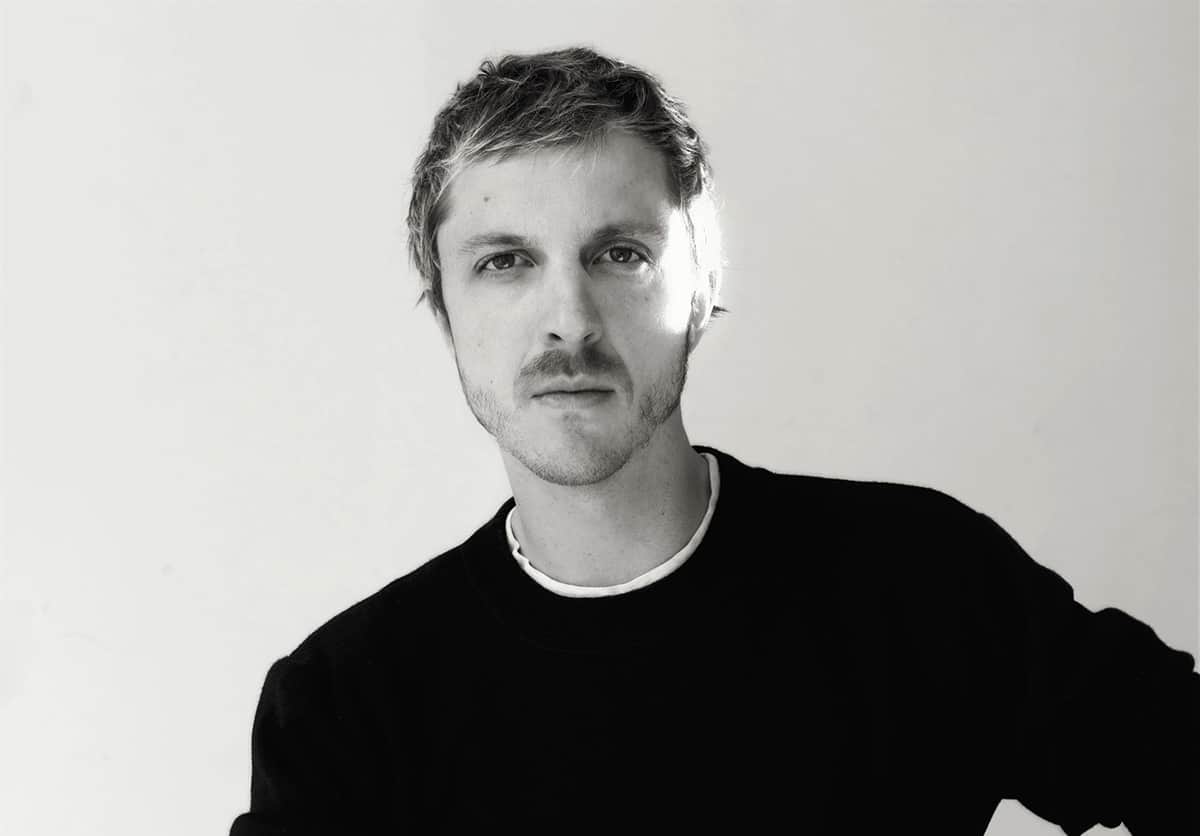
Philippe Pourhashemi: Where did you get the idea of having a balloon pit during your last show?
Glenn Martens: It was truly meant as a joke. Y/Project is a young brand and our clientele tends to be younger as well. The idea was that fashion shouldn’t take itself too seriously and embrace positive thoughts. It’s okay to have fun, be entertained and relax. This last collection also has to do a lot with pleasure and I wanted to convey the lighthearted side of the fashion industry. It’s only clothes in the end.
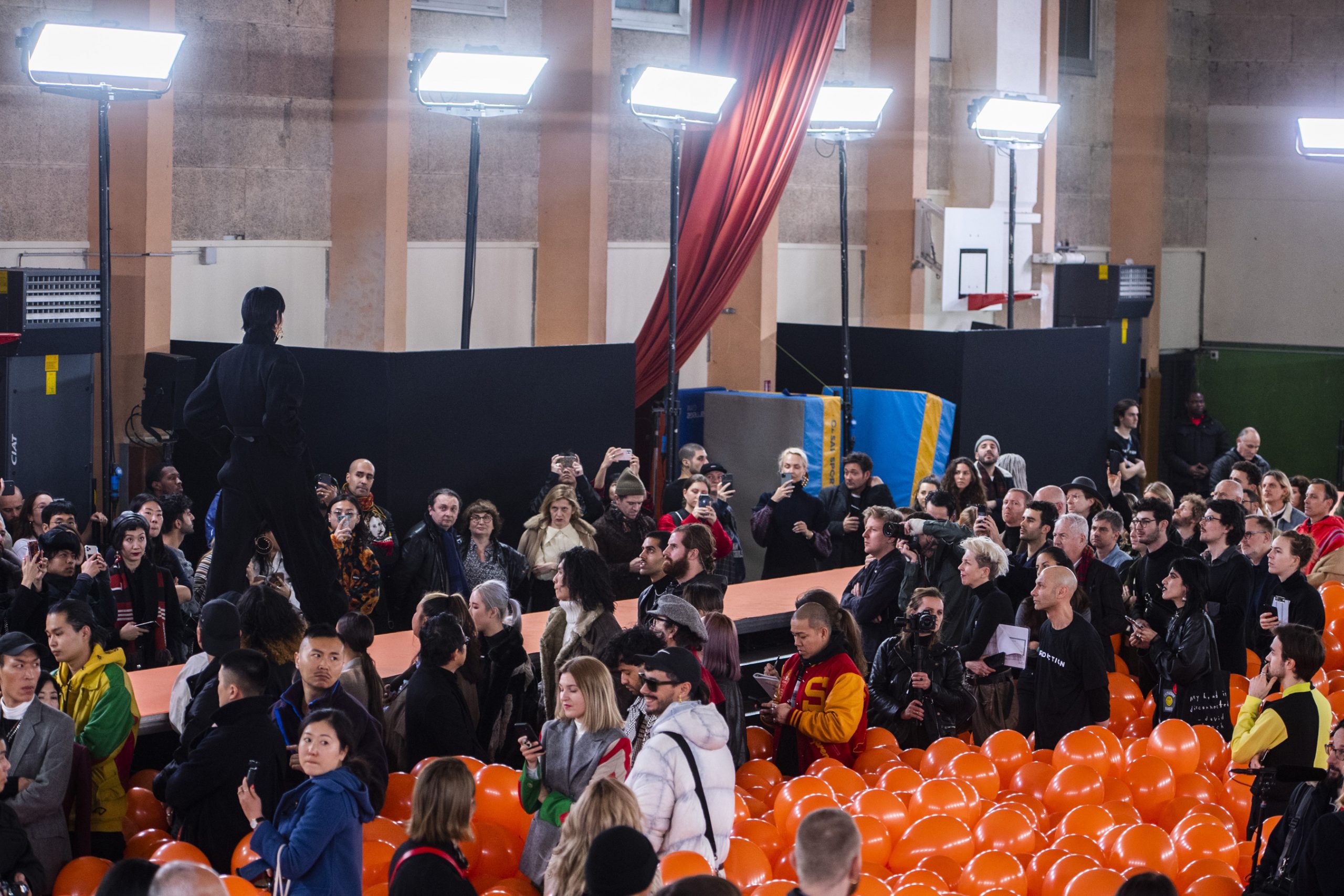
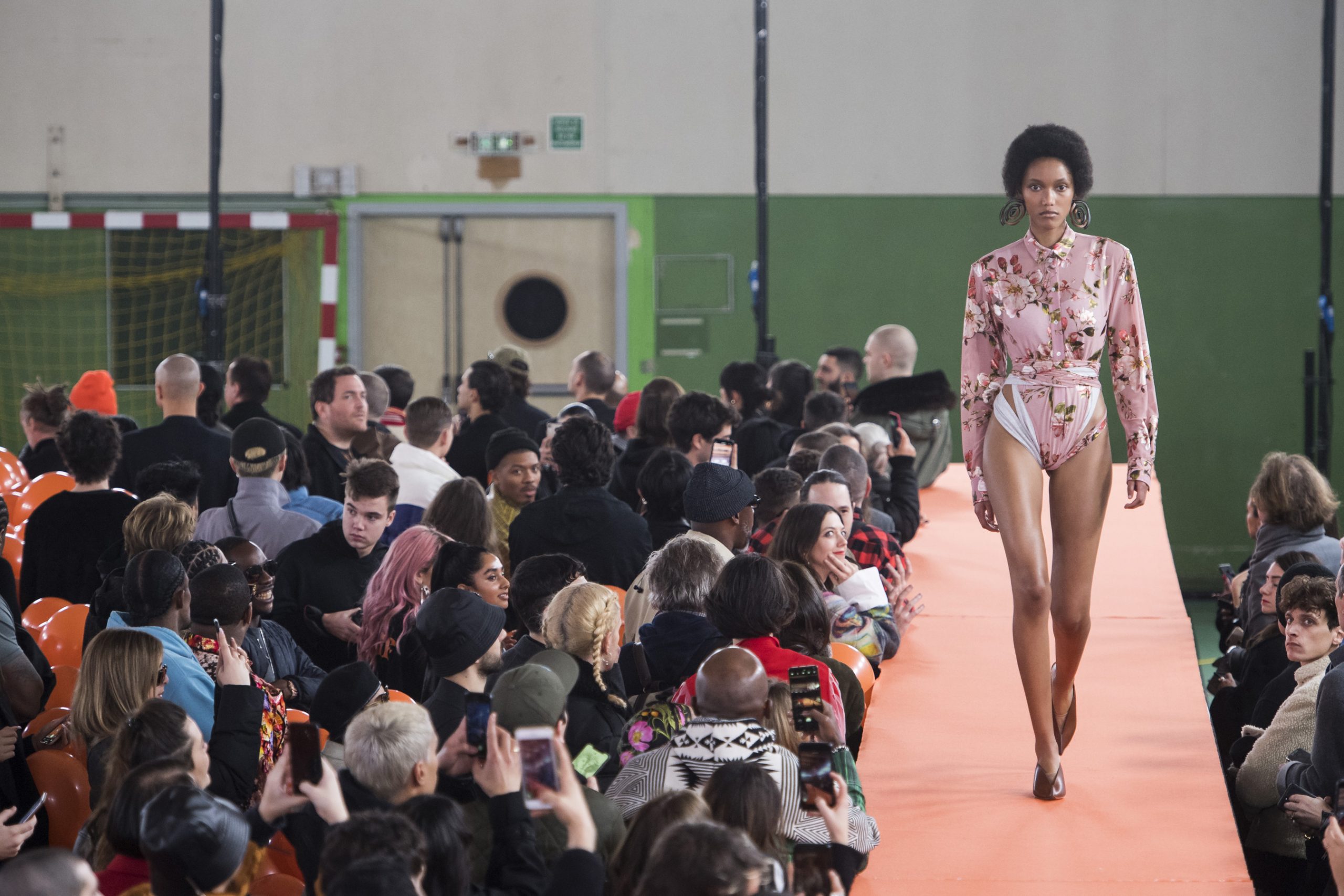
Philippe Pourhashemi: Were you addressing our current context as well?
Glenn Martens: Maybe. We all know fashion is a tough world and you have to fight all the time. People in the industry can become so humorless and backstabbing.
Philippe Pourhashemi: The way you behave hasn’t really changed though.
Glenn Martens: That’s true, but some fashion people love to be bullies and intimidate others. They will use aggression to get what they want and that’s clearly not what I stand for. My mother is a nurse and I feel that what she does is much more important than designing clothes. What we do isn’t about survival either, but offering a dream and a sense of joy to people. This playful dimension is key when it comes to Y/Project. The music of the show expressed this as well. It was a marching band from Wallonia that my sound designer remixed for the runway.
Philippe Pourhashemi: Would you say that your clothes are festive in a sense?
Glenn Martens: Definitely. Y/Project is about putting something on and enjoying the experience. I don’t think we necessarily design garments for everyday life, but special occasions. Even on a simpler piece, there’s always a weird feature or interesting detail. I like the idea of absurdity in clothing.
Philippe Pourhashemi: Sounds quite Belgian to me.
Glenn Martens: I guess there is a sense of surrealism, because I like people to take a piece from the collection and appropriate it for themselves. It can be worn in all kinds of ways and there is always room for interpretation.
Philippe Pourhashemi: There’s a sense of imbalance and distortion in your clothes. Is this something inherent in your own taste and personality or does it reflect what you feel around you when designing?
Glenn Martens: It’s true that a lot of clothes we create have been cut not to be worn in a perfect way. The wearer needs to understand how to make the clothes work for himself or herself. Many brands design clothes with the idea that they should operate like armor: you put them on and don’t need to think about yourself. Y/Project is the opposite. The clothes raise questions, instead of providing answers. You really need to think twice about how you are going to wear them.
Philippe Pourhashemi: Does it amuse you when people get confused by your clothes?
Glenn Martens: (he laughs) It does. At the same time, the clothes are never meant to be worn one way only. There is no right or wrong and that’s what I find interesting. You become more aware of yourself when you wear Y/Project.

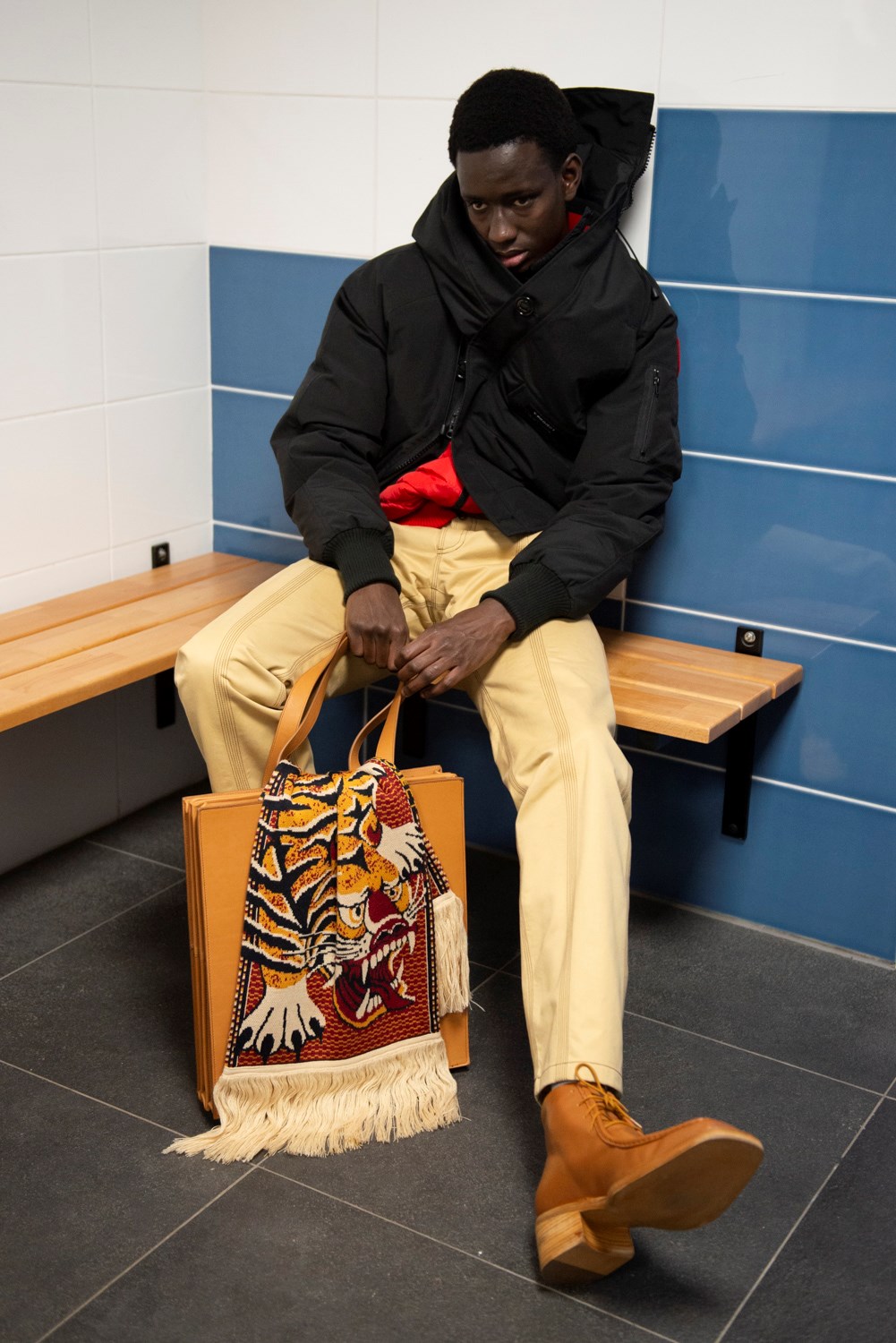
Philippe Pourhashemi: Let’s go back to these ideas of the surreal and the absurd. How do you interpret them?
Glenn Martens: It’s more humor than darkness for me.
Philippe Pourhashemi: It wasn’t the same when you arrived here.
Glenn Martens: No, the vision was more serious, but it also reflected Yohan Serfaty’s health at the time. His daily life was very hard and I respected his vision. We therefore had to transform the brand progressively and not alienate his customer base.
Philippe Pourhashemi: Your clothes feel quite chaotic to me. Would that be an accurate description?
Glenn Martens: There is an element, which is not structured, but ‘chaos’ isn’t the right word either. The great thing about 2020 is that you can travel anywhere and adapt to new circumstances. I was recently staying on an island close to Lanzarote and camping there with friends. We didn’t even have a toilet. I’m just as comfortable there as in a cocktail on Place Vendôme, right in the center of Paris. Our clothes allow us to behave like this today.
Philippe Pourhashemi: Can clothes be protective?
Glenn Martens: I think wearing a big logo is protective, but not an extension of your true self. Fashion should reveal your character and personality.
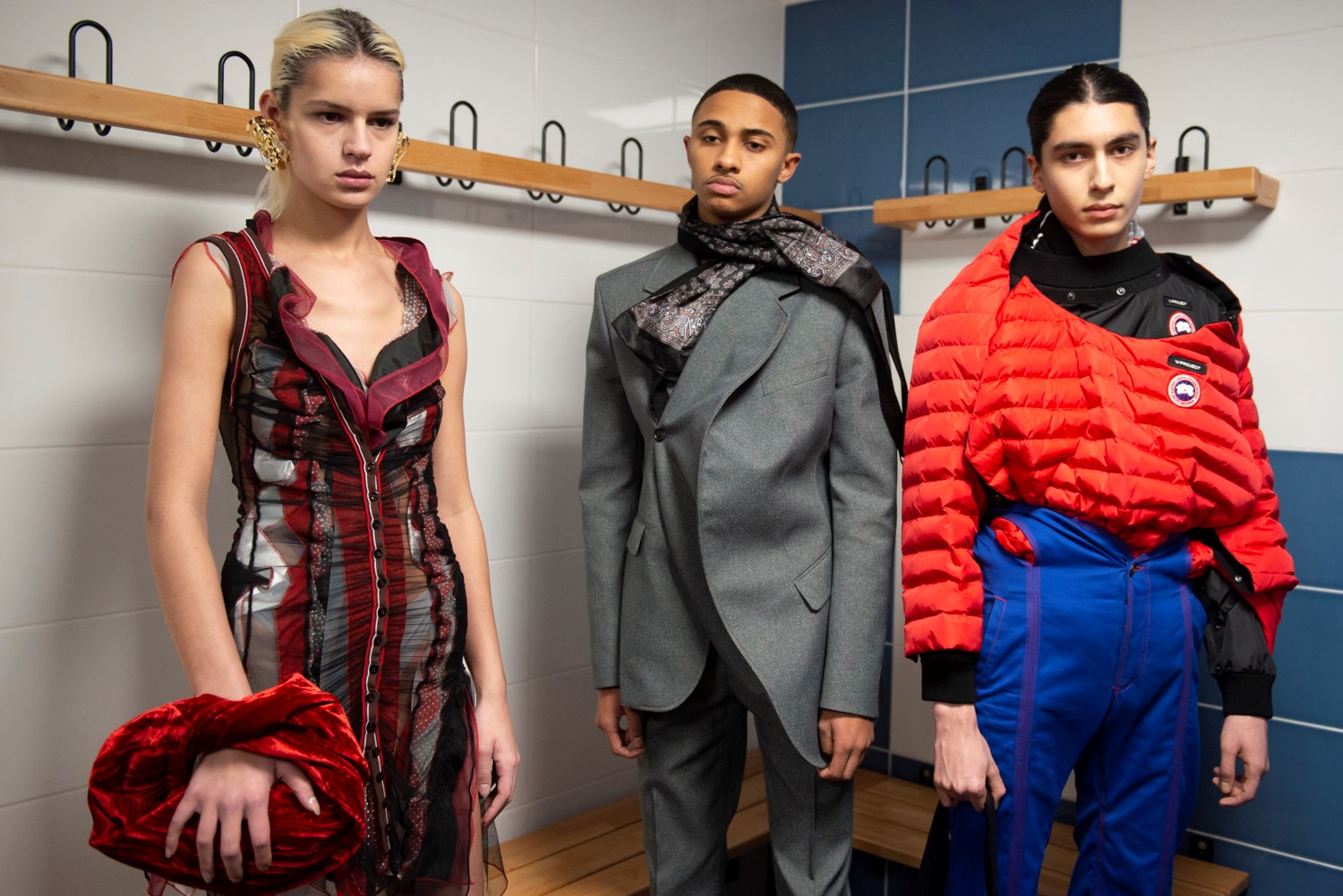

Philippe Pourhashemi: What made you want to be in fashion?
Glenn Martens: My life is the cliche story of the little gay boy who liked to play with Barbie dolls. I was fascinated by history as a child: the flamboyance of the aristocracy, and the glamour of kings and princesses.
Philippe Pourhashemi: Did you make clothes for your dolls?
Glenn Martens: Sure. I made dresses out of scarves, that kinda thing.
Philippe Pourhashemi: Did your parents raise their eyebrows when you asked for Barbie dolls?
Glenn Martens: Not really. My mother was more on the conservative side, but my father was cool with it. I have kept these drawings somewhere and realize I was primarily obsessed with the clothes those figures wore, big gowns and all the rest.
Philippe Pourhashemi: After all, you grew up in Bruges in the Kingdom of Belgium…
Glenn Martens: True. History made me dream, I guess, and that’s how I became aware of fashion. Today, I’d like to distract people from their everyday reality and make them dream, too.
Philippe Pourhashemi: Is our life harder than the one our parents had?
Glenn Martens: Every period has its challenges.
Philippe Pourhashemi: We have more freedom and opportunities to travel, but our times are very politically correct.
Glenn Martens: Maybe, but I’ve never thought of my sexuality as being a problem for example.
Philippe Pourhashemi: Is gender still an important topic in fashion?
Glenn Martens: We never really think of it much at Y/Project. When we started the brand, we had a very small budget for samples and I took menswear pieces, which we then incorporated within the womenswear line. I guess gender fluidity was more a necessity for us. At the same time, we were lucky to offer this when it became trendy.
Philippe Pourhashemi: You have more female models within the men’s shows now.
Glenn Martens: That’s because we grew as a company and can now offer precollections to buyers. The reality of the business demands this.
Philippe Pourhashemi: Your volumes are incredibly varied and may suit male or female bodies.
Glenn Martens: Exactly. We like to reflect diversity that way.
Philippe Pourhashemi: What do you find sexy in a man?
Glenn Martens: I think it’s more his attitude than specific clothes. The models we had this season looked quite sexy to me (he laughs).
Philippe Pourhashemi: How do you see the brand develop in the future? You doubled stockists almost each season for a couple of years.
Glenn Martens: We don’t double stockists anymore, even though my boss would be delighted if we did… After 6 years, we have to consolidate the brand, start selling and distributing our accessories separately, and keep our 150 stockists happy. We have 40 appointments tomorrow and it’s the first day selling.
Philippe Pourhashemi: Really?
Glenn Martens: Yeah.
Philippe Pourhashemi: Why did you decide to have your showroom here this season?
Glenn Martens: Renting a decent space somewhere costs around €15000 and we felt we wanted to save that money to keep on refurbishing our current office, which became a lot bigger last year.
Philippe Pourhashemi: As the team grows, do you find yourself having to manage your teams more?
Glenn Martens: What we do now is pick some directors for each section we have and I work quite closely with them.
Philippe Pourhashemi: Are you someone who delegates easily?
Glenn Martens: I still need to learn how to do that. It’s a new organization, but I’m starting to get into it. It helps that there’s an expert in each team, and that person will know their products a lot more than I do, so it makes sense in the end.
Philippe Pourhashemi: What will you do with the extra time you get out of that?
Glenn Martens: I’ll be working on other projects.
Philippe Pourhashemi: Tell us more.
Glenn Martens: I can’t reveal much at the moment, but Die Angewandte -the prestigious fashion school in Vienna- asked me recently if I could join them as their new director. Vivienne Westwood, Hussein Chalayan and Raf Simons had the same position there and this is something I’ve wanted to do for a while. I used to freelance regularly before, working for BOSS as a consultant and teaching at HEAD in Geneva. I had to quit those contracts two years ago because the brand was growing very fast, but now I have a salary and the ability to collaborate with others.
Philippe Pourhashemi: What is it that you missed about such partnerships?
Glenn Martens: I think mainly the ability to go somewhere else and evolve within a different environment. Paris is like a bubble that way and it’s nice to get out of it if you can.
Philippe Pourhashemi: Do you hang out a lot with fashion people?
Glenn Martens: I do during Fashion Week, not so much besides those times. I’m lucky to work with a team -and freelancers- I genuinely like as people. Some of them happen to be my best friends. Sometimes you have to federate people and make sure they all have the same goal, but in a team it’s normal that people fight or have periods of conflict. I don’t like to interfere when it happens and prefer to let them get on with things.
Philippe Pourhashemi: Can you tell me more about your collaboration with French photographer Arnaud Lajeunie?
Glenn Martens: Arnaud and I have been working together for 7 years now and we understand each other instinctively.
Philippe Pourhashemi: You’re quite faithful to people, aren’t you?
Glenn Martens: Why change collaborators if the chemistry is there? Actually, I’ve changed stylists recently, but to be precise, she’s the one who left (he laughs).
Philippe Pourhashemi: Did you style the January show yourself then?
Glenn Martens: Yes, I did. I have a new stylist starting this month though, but I can’t say who it is before the women’s show takes place. The interesting thing about him is that he likes to get involved from the start of the season and follow what’s going on. I didn’t really have that with the stylist I worked with previously. She came before the show and that was it.
Philippe Pourhashemi: Congratulations on doing it yourself, it looked great!
Glenn Martens: Thank you. It was a bit hard not having someone by my side. If the formula works, I’d rather not change anything. The longer I work with people, the better it gets. There are collaborators I don’t even need to talk to, they just get it instantly. You can’t really achieve that without having a certain level of intimacy with someone. Stephanie D’heygere, who has been designing my jewelry and accessories for years, is someone I have that kind of connection with.



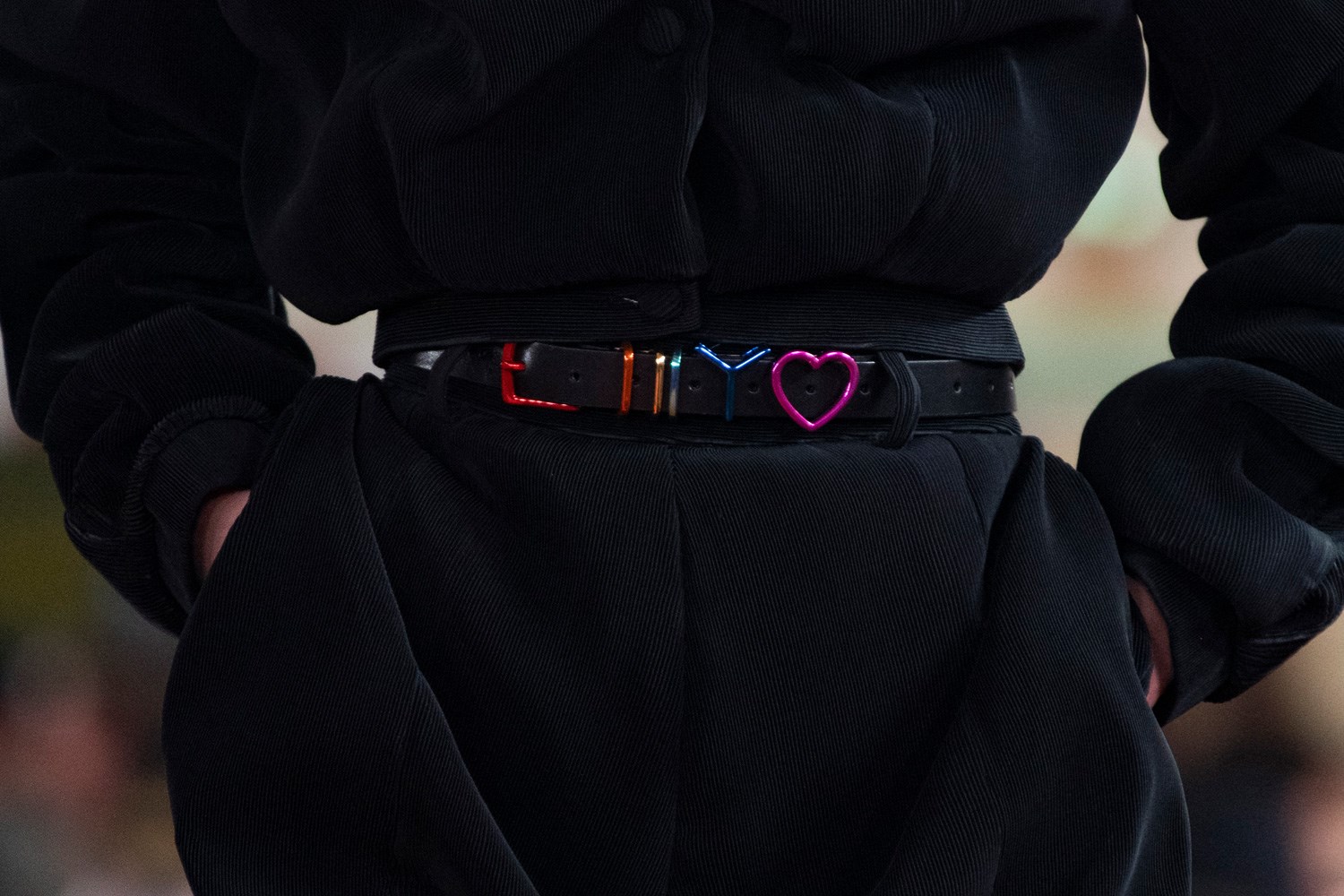
Philippe Pourhashemi: Which markets are you currently developing for the brand?
Glenn Martens: Asia has been one of our priorities. We were invited to Tokyo by Dover Street Market and I was amazed by the number of fans I saw there. I never expect that many people to turn up and love the clothes.
Philippe Pourhashemi: Who were they?
Glenn Martens: They were mostly young men, asking very personal questions. They wanted to know which brand of sneakers I wore when I took a bow at the end of the show last season, so it’s always a bit weird…
Philippe Pourhashemi: Sounds a bit fanatical.
Glenn Martens: But it was sweet at the same time.
Philippe Pourhashemi: Don’t you want to open your own stores?
Glenn Martens: We are thinking about all these things. Are we going to launch an online store or not? At our level, there are very few brands that are still completely independent, most of them expanding with external investments. Every time we spend money on something, we need to watch our cash flow. So we have to be smart with what we do and think about everything we spend. That means we need to be extra careful and not make stupid mistakes. As far as the evolution of the brand itself is concerned, I do not want to compromise our vision and will keep on designing garments that are playful, funny and thought-provoking. To be honest, I couldn’t care less about starting a new decade or which direction fashion is headed in. I just want to continue building-up on what we started. I have to design creative clothes, not logo-covered items like other brands do. In fact, we do use logos sometimes, but it’s always as part of the garment and never a gratuitous thing. The collections keep selling though, so I guess we must be doing something right.
Philippe Pourhashemi: What are the pieces in your last collection that really stand for the essence of the brand?
Glenn Martens: We worked on those oversize, deconstructed firemen coats, and I really like the way they turned out. The lining is very oversize, which allows you to carry it on the body in contrasting ways. We also experimented with fabrics more, coating cotton with latex for instance. There are also pants which are attached to a bodysuit, revealing what’s underneath. Once again, you have the option to transform the piece, depending on the circumstances you wear it.
Philippe Pourhashemi: You do like to reveal the body in unexpected ways, don’t you?
Glenn Martens: Yes, I think it’s fun to expose the body and show unusual parts of it. It’s kind of cheeky and seductive at the same time.
Philippe Pourhashemi: We always go back to this idea of twisting things and going against expectations.
Glenn Martens: We collaborated with Canada Goose this season and I’d like to keep on doing similar projects in the near future. The line will be distributed in their own stores, too, from November onward. We had done a similar collaboration with UGG twice and it was very positive for us.
Philippe Pourhashemi: How long does it take to develop such lines?
Glenn Martens: If you want to get things right, it takes about a year, but the great thing is that you get to benefit from another brand’s know-how and expertise. Whatever we do with other brands, we want to make sure it never looks basic or normal. Otherwise there is no point doing it at all.